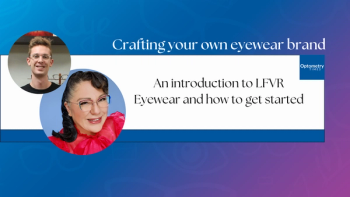
AAOpt 2022: DEI foundations in the optometric practice
Parres Wright, OD, FAAO, shares highlights from her discussion, "DEI Building Blocks, its foundational concepts understanding diversity, equity, and inclusion in optometry," which she co-presented during AAOpt 2022.
Parres Wright, OD, FAAO, assistant professor at Midwestern University Chicago College of Optometry, speaks with Optometry Times®' Kassi Jackson on highlights from her discussion titled, "DEI Building Blocks, it’s foundational concepts understanding diversity, equity, and inclusion in optometry," which she co-presented with Keshia Elder, OD, MS, MS, FAAO, and Janette Dumas Pepper, OD, during the 2022 American Academy of Optometry (AAOpt) annual meeting in San Diego.
Editor's note: This transcript has been edited for clarity.
Jackson:
Hi, everyone. I'm Kassi Jackson with Optometry Times, and I'm joined today by Dr. Parres Wright, assistant professor at Midwestern University Chicago College of Optometry.
She's here to share highlights from her discussion titled, "DEI building blocks: its foundational concepts, understanding diversity, equity and inclusion and optometry," which she is co-presenting during the 2022 American Academy of Optometry meeting held this year in San Diego.
Thank you for being here. Dr. Wright tell us about your talk.
Wright:
Yeah, so this one I'm pretty excited about because I get to co-present with some amazing ladies. So my co-presenters are the newly minted dean of UMSL (University of Missouri-St. Louis), Dr. Keisha Elder, and also associate professor at Southern College of Optometry, Dr. Janette Pepper. And so I'm excited to be presenting with them. I think this is going to be a great talk and give some people a real basic understanding of DEI concepts.
Jackson:
Why is this topic so important for optometrists to address?
Wright:
Well, we as optometrists, we are primary care providers, and we see all types of patients from all different backgrounds. And it's important for us to bring our inclusive mind to patient care to make our patients not only feel comfortable, but also to provide the highest quality of care for patients.
Jackson:
Diving a bit deeper. What does this mean for patient care?
Wright:
I think that it improves patient care immensely. Because if a patient feels comfortable with their provider and feels like their provider understands them as a human being and what their situation might be, I think that patients are more likely to follow our treatment plans. I think they're more likely to return for follow ups. And I think they're more likely to be honest with you about the things that they're doing outside of your care.
Jackson:
Dr. Wright, thank you so much for your time today.
Wright:
Thank you for having me.
Newsletter
Want more insights like this? Subscribe to Optometry Times and get clinical pearls and practice tips delivered straight to your inbox.
















































.png)


